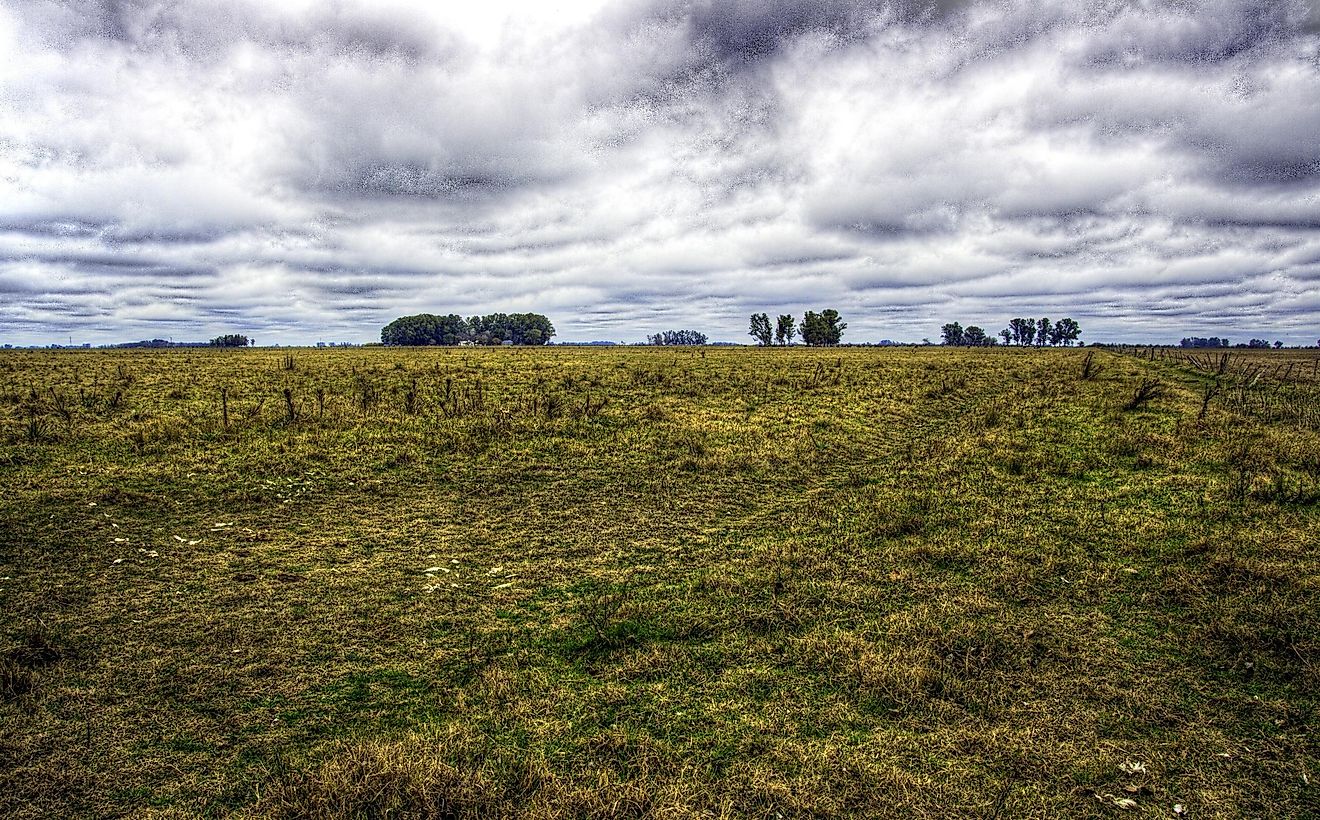Pampas Region Of South America

5. Description
The Pampas are vast plains that range across central Argentina from the Atlantic coast to the foothills of the Andes. It is bounded by the Gran Chaco, the alluvial lowland, to the north and the Patagonia scrubland to the south. Though the Pampas have a gradual slope northwest to southeast, from 1,650 feet (500 meters) to 66 feet (20 meters) above sea level, most of the region appears flat. The Pampas is a distinctive geographical feature of South America and covers a staggering 295,000 miles (760,000 square km). It is divided into two zones: the western dry zone is largely barren with large saline fields, sandy deserts, and brackish streams. In the east is the humid sections of the Pampas, a much smaller area with water sources. It includes part of the Buenos Aires province, the economic center of Argentina and the country’s most populated area.
4. Historical Role
After colonizing South America, the Spaniards introduced cattle and horses to the Pampas region. The animals were collared by gauchos who are well-known for their horsemanship and lawlessness. After independence, Argentinean landlords drove the Indians from the plains and employed immigrants to grow alfalfa, maize, and lush pastures. The southeastern stretches of Pampas between Tandil and Mard Del Plata contain much swampland and are relatively cool. It was devoted to the breeding of the pedigreed cattle and sheep originally imported from Great Britain. After the introduction of the railway, tractors replaced horses, and the gaucho became peons and laborers.
3. Modern Significance
Since the beginning of the 20th century, agriculture is the primary economic activity in the Pampas. The western belt, from Sante Fe to Bahia Blanza, is cultivated chiefly for alfalfa and wheat while maize and flax are grown around Rosario. These are also the industrial regions with the principal transportation networks, where significant enterprises are meatpacking and food processing. Parts of the Pampas are noted for their vineyards, especially in the region of Mendoza, which alone produces half the wines of entire South America. Argentina’s gaucho literature is heavily concentrated on life on the Pampas, which also constitutes the theme for Argentina’s musical folklore.
2. Habitat and Biodiversity
Native animal species of the Pampas include foxes, bush dogs, skunks and small herds of guanaco. Carnivores include pumas, Geoffrey’s cats, and pampas foxes. Other mammals include the vizcachas, cuis pampeano, nutria and the opossum. Among the feathered friends are species related to the hawks, sparrows, and waterfowl of the North American prairies. There are various other bird species, including migratory birds, whose names will not make much sense to a person outside South America. Trees are rare in the Pampas, and frequent wildfires allow only various kinds of grasses to flourish. These are mostly prairie and steppe type grasses. ‘Pampas grass’ is the distinct species of the region. These grasses grow in various strata because water is available in gradients. The soil is comprised chiefly of clay, fine sand and silt washed towards the Atlantic by the great rivers; they are also blown to the region by dust storms from the west. Warm air from the tropical north periodically meets cool winds from the south and creates pamperos, violent storms with heavy rain in the vicinity of Buenos Aires.
1. Environmental Threats and Territorial Disputes
Like all other natural ecosystems of the world, the Pampas grasslands are also under severe threat from human activities. Extensive areas of valuable grassland have already been cleared for cultivation and cattle grazing purposes. Competition with human-bred livestock depletes the food sources of the wild herbivores inhabiting the grasslands. Persecution and poaching of the wild species have also severely reduced their numbers in the Pampas. The entire ecosystem is thus currently under threat and needs to be conserved by law in order to save the wild beauty and natural treasures of this habitat.







